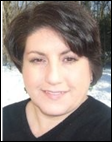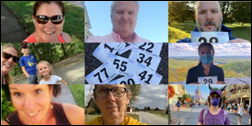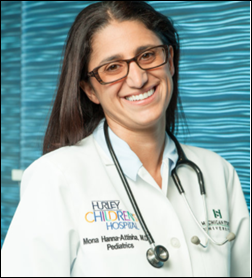Curbside Consult with Dr. Jayne 11/9/20
It’s been a busy week in the clinical trenches. If you had ever told me that I would see nearly 150 patients over two urgent care shifts, I would have told you that you were crazy. Nevertheless, it’s the world we’re living in.
I’m continually impressed by the ability of my team to dig down deep, but we’re starting to push hard against leadership for some kind of daily cap on the number of patients we can see. As an urgent care, we’re not subject to the same rules as hospital emergency departments, which means we can turn people away. It’s not ideal, but neither is the reality of 12-hour shifts turning into 14, 15, or 16-hour ones, especially when staff is scheduled to see patients again the next day with less than eight hours turnaround time.
I’ve asked to cut my schedule down for our next scheduling block, but it doesn’t start until January. I have a sneaking feeling they’ll give me the same number of shifts regardless, because I don’t see us becoming less swamped when the projections show that COVID cases will likely be at their peak during the third week of January.
I’m keeping myself grounded with informatics projects as way to try to preserve my sanity. A couple of articles caught my eye, because even with a pandemic upon us, clinicians are still dealing with heavy burdens of non-clinical work and technical systems that don’t always deliver the support promised.
This piece in the journal Pediatrics highlights the fact that pediatricians are averaging nearly seven hours of EHR use each day. Researchers found that EHR documentation and review of patient records totaled 6 hours, 40 minutes of the time that the EHR was in use. That’s an average of 16 minutes per visit, with approximately 12% occurring after hours. Researchers looked at EHR log data from January to December 2018 for all pediatricians and adolescent medicine physicians who practice in the 2,191 health care organizations represented in the Cerner Millennium EHR Lights On Network database. This encompasses over 20 million outpatient encounters by 30,000 physicians.
The study is interesting because researchers could look at the variability in time as it compared to optimization efforts across similar EHR platforms, as well as roles and responsibilities for data entry and the differences in implementation and training across organizations. I’ve seen wide variability across organizations’ use of the same platform that can lead to “make or break” type workflows. The quality of training physicians receive also seems to be directly proportional to their success with the EHR and whether they succeed in the system or struggle. Other interesting facts from the study:
- More than 94% of pediatricians in the US use an electronic health record.
- Active users were defined as those who logged into the system with activities recorded <45 seconds apart; clicked the mouse at least three times per minute; completed at least 15 keystrokes per minute; and who had mouse movement of greater than 1,700 pixels per minute.
- After-hours use was defined as that between 6 p.m. and 6 a.m. local time on weekdays and anytime on weekends (which may not accurately reflect “non-office” times for those working half days or coming in early to work on the EHR).
- Physicians practiced at various locations: integrated delivery networks (34%), regional hospitals (30%), independent physician groups (22%), and academic medical centers (11%).
- The physicians monitored on the Network represent a 44% sample of US pediatricians based on comparison with the 2018 American Board of Pediatrics database.
- Pediatric rheumatologists spent much longer in the EHR at 30 minutes per encounter.
The study was limited by the fact that it only looked at physicians on Cerner Millennium. It also excluded other provider classes, such as physician assistants or nurse practitioners. The authors conclude that a need exists to “continue to identify and eliminate unnecessary and low-value activities across the entire physician workflow.” I don’t think anyone would disagree with that.
The second article, from JAMA Network Open, looked at the impacts of e-consultations on the workload of primary care providers. The authors looked at Veterans Health Administration primary care providers who were using e-consultations to interact with subspecialists. Researchers interviewed 34 clinicians who had experience with e-consultations in 2017. Although primary care clinicians felt that the process improved clinician communication, they also felt that the burden for additional diagnostic testing and follow-up was shifted from the subspecialists to themselves. They also thought that they were being asked to diagnose and manage conditions that were not only outside their comfort zone, but possibly outside their scope of practice.
The study was limited by its small sample size as well as its qualitative approach, and researchers were not confident that participants were objective. Participants also noted the need to track and follow up on e-consultation requests as a barrier, which seems tangential to the actual consultations themselves, although still important. Participants also felt that the templates that were used to document were not user-friendly and/or included required fields that were not relevant to care. I love qualitative research and appreciate the fact that the authors included actual respondent quotes in the article. The authors conclude that various workflow improvements could be made in tracking and documentation systems that would help the primary care clinicians.
However, they didn’t seem to mention the need for further analysis on the other end of the e-consultation request. What do subspecialists think about it? What kind of burden does it add to their day? Are there other modalities, such as virtual visits, that deliver the same outcome for the patients (including decreased time to subspecialist consult) that would be more acceptable all the way around? As in many studies, more research is needed, but I hope next time they look at both sides of the workflow.
These articles underscore the need for those of us on the healthcare IT front to continue to do what we can for better outcomes for patients and clinicians alike. We also need to feel empowered to challenge operational and clinical teams to address dysfunctional workflows that might not be helped by technology and to help those teams think through the idea that tech might not be needed to save the day.
Have you been involved in the e-consultation process at the VA? What’s your take on it? Leave a comment or email me.

Email Dr. Jayne.






























































And which "political exercise[s]" by a private entity are appropriate for state governments in this country to punish with a…